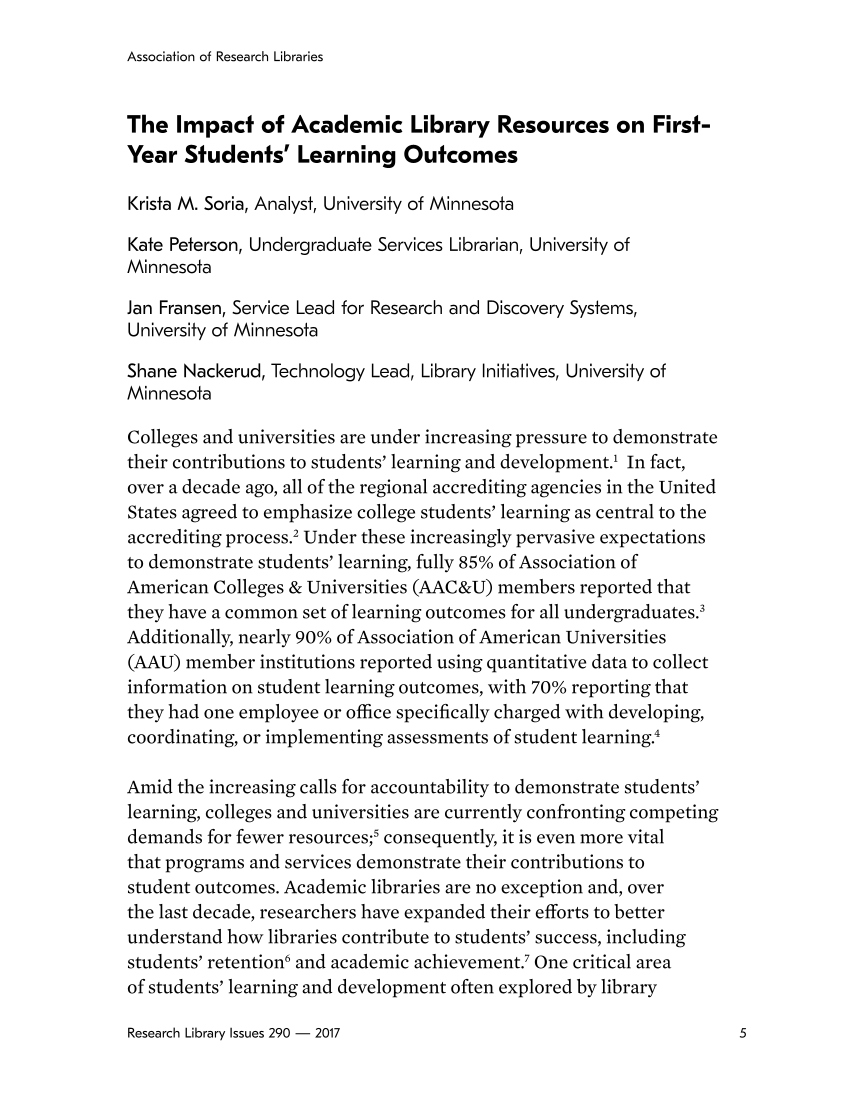5 Association of Research Libraries Research Library Issues 290 — 2017 The Impact of Academic Library Resources on First- Year Students’ Learning Outcomes Krista M. Soria, Analyst, University of Minnesota Kate Peterson, Undergraduate Services Librarian, University of Minnesota Jan Fransen, Service Lead for Research and Discovery Systems, University of Minnesota Shane Nackerud, Technology Lead, Library Initiatives, University of Minnesota Colleges and universities are under increasing pressure to demonstrate their contributions to students’ learning and development.1 In fact, over a decade ago, all of the regional accrediting agencies in the United States agreed to emphasize college students’ learning as central to the accrediting process.2 Under these increasingly pervasive expectations to demonstrate students’ learning, fully 85% of Association of American Colleges & Universities (AAC&U) members reported that they have a common set of learning outcomes for all undergraduates.3 Additionally, nearly 90% of Association of American Universities (AAU) member institutions reported using quantitative data to collect information on student learning outcomes, with 70% reporting that they had one employee or office specifically charged with developing, coordinating, or implementing assessments of student learning.4 Amid the increasing calls for accountability to demonstrate students’ learning, colleges and universities are currently confronting competing demands for fewer resources 5 consequently, it is even more vital that programs and services demonstrate their contributions to student outcomes. Academic libraries are no exception and, over the last decade, researchers have expanded their efforts to better understand how libraries contribute to students’ success, including students’ retention6 and academic achievement.7 One critical area of students’ learning and development often explored by library









































